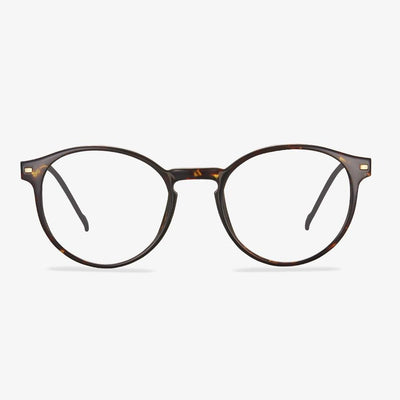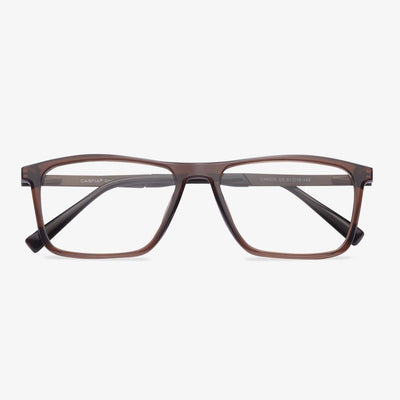The Pros of Transitions Lenses
First, we will show you the advantages of the transition lenses.
Transition lenses or photochromic glasses are quite cost-effective. With the transition lenses, you don’t have to buy two pairs of glasses: prescription glasses or normal glasses and you do not need to switch them frequently. So, they are also convenient and bring you great convenience.
Carrying two pairs of glasses means that you are much more likely to lose or misplace either of them. Having only one pair of glasses can limit the risk of losing glasses. In addition, transition glasses provide more protection than normal sunglasses. They can filter out a good deal of harmful UV rays from the sun so as to protect your eyes.
What’s more, transition glasses come in a lot of different styles, shades, and tints suitable for anyone’s taste, so it won’t limit your fashion and make you look more fashionable.
Eyeglasses String Holder Straps Cord 4 Premium Eyeglass Chains for Men Women
The eyeglasses cord is equipped with a progressive eyeglasses belt ring protection mechanism to completely prevent your eyeglasses from falling. The eyewear strap can be held close to different types of eyewear temples. This cable holder is perfect for small, wide arms. They have an eyewear chain and string with an adjustable design, and an eyewear lanyard comes with a surprise gift. They provide a lifetime warranty, so you can rest assured to buy.
Polarized vs non-polarized sunglasses
-
Non-polarized sunglasses generally only have the two basic functions of shielding strong light and filtering ultraviolet rays, and their efficiency in filtering ultraviolet rays is low. In our daily life, in addition to strong light and ultraviolet light, when light passes through uneven roads, water surfaces, and other places, irregular diffuse reflection light will be generated, which will cause blurred vision and fatigue in the eyes.
-
Polarized sunglasses can filter out this kind of light, only absorb the reflected light of the object itself, truly present what you see, make the field of vision clearer, and reduce visual fatigue. In addition, polarized sunglasses have a 99% blocking rate of ultraviolet rays due to their high-efficiency filter layer, which can effectively reduce the damage of ultraviolet rays to the eyes.
-
When judging whether the sunglasses are polarized lenses, you can rotate the sunglasses up to 45° clockwise. If the color of the lens changes at this time, and the color of the sunglasses returns to normal after turning the sunglasses back to the original position, then it can be judged that the sunglasses are polarized. And if you can’t see the change in the color of the sunglasses lens no matter how you turn it, then you can judge that the sunglasses are not polarized.
Figure out the categories of driving glasses
Driving glasses are usually divided into daily and night glasses. Daily use refers to the glasses with anti-glare function and darker colors like gray, brown and gray-green, and other colors. Daily lens transmittance is over 8%. Night type usually refers to the glasses that can prevent glare from headlights of opposite vehicles and increase brightness at the same time. That is, it can prevent lights and not block the road, and can brighten and increase the visual scope. Night lenses have a transmittance of more than 75%.
Who are suitable for progressive lenses?
A progressive piece is suitable for most old people to wear. The proper person is the one who has the visual needs of the long, medium and short distance cares about beauty, and is willing to accept new things. In order to avoid binocular vertical prism differences, for the wearer whose equivalent spherical lens with anisometropia is more than 2D, especially if the difference in refractive power of the vertical meridian is more than 2D, it should be checked with caution. Opticians whose vision needs do not match the progressive lens design, like dentists, often experience blurred vision when working with the far side of the lens to look closer.
Advantages of Progressive Lens
Continuous and clear vision throughout the entire process is the advantage of progressive lenses. Because the added value continuously increases gradually in the gradient zone, the wearer can obtain continuous clear vision from the far point to the near point through the gradient lens under the appropriate head position. In line with physiological optics, better adaptation. The appearance is better than that of double-lens and triple-lens. There is no dividing line of sub-sheets, and there is no ring-shaped blind zone and invisible sub-sheets.
Anti-reflection Coating
Anti-reflection Coating, known as reflective coating and antireflection film, is called anti-reflection coating in English, or AR Coating for short. Initially, anti-reflection coating technology was used in the sights of weapons. It was only after the war that the technique was used to improve the performance of eyeglasses. Another problem occurs when taking pictures because the lens's surface is relatively reflective. The resulting photos don't show the eyes of friends who wear glasses. This problem is solved by plating anti-reflection film.











































